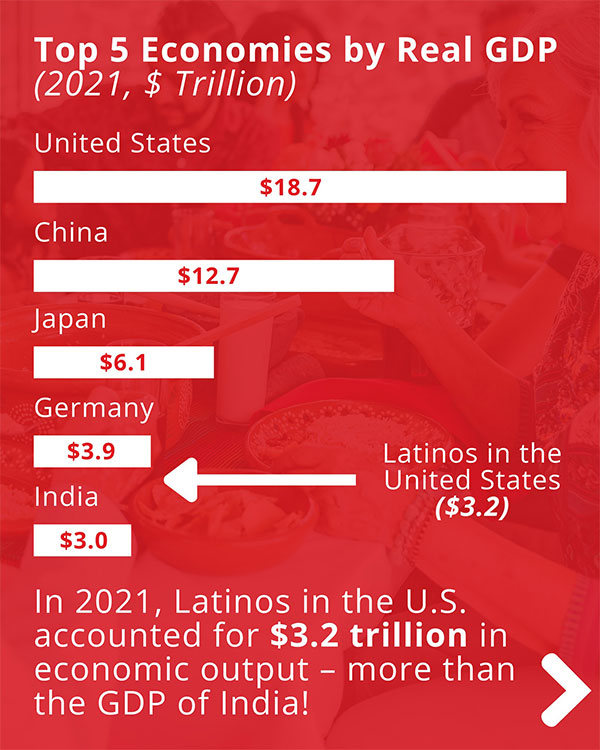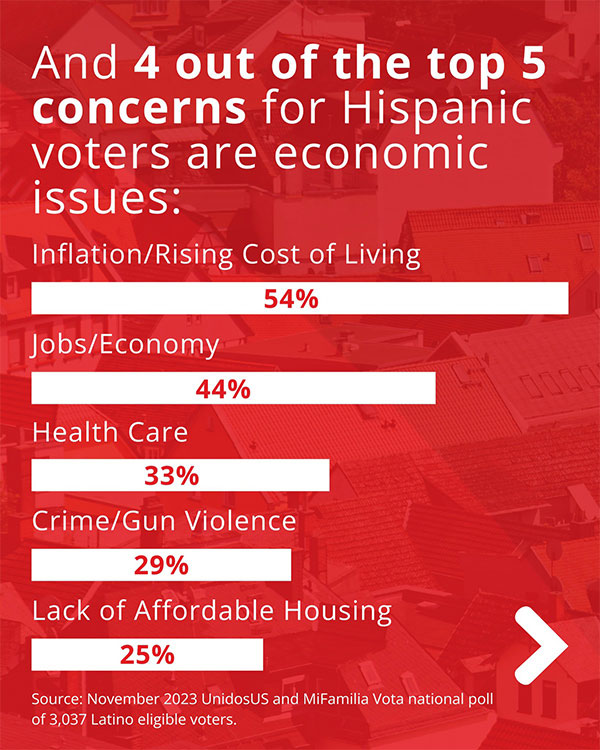The migration crisis is one of the main focal points of the Republican campaign. It keeps MAGA voters motivated and wins over more independent and undecided voters concerned about what they insist on calling an invasion.
Earlier this year, the crisis could have been effectively addressed through a bipartisan agreement between Republicans and Democrats. However, former President Trump alerted his followers in Congress to block the bipartisan agreement, allowing him to continue capitalizing on the crisis in his bid to reclaim the White House.
In addition to blaming migrants for a rise in violence—which doesn’t exist, as this administration has actually seen a decrease—they are also blaming undocumented migrants for inflation. The economy is another priority issue for most Americans. Despite global post-pandemic problems and ongoing wars, the U.S. economy remains more solid compared to the rest of the world.
While global concerns about increased migration due to various crises are legitimate, the case of the United States is a clear example of how migration has been an economic booster and a remedy for some regions or suburbs that were becoming semi-abandoned, helping them regain economic and commercial vitality.

Regarding Hispanic immigrants in particular, studies show their unique ability to revitalize finances, boost commerce, lower labor costs, multiply and bring services closer, recreate gastronomic and entertainment offerings and invigorate many other fields.
According to Pew Center data, between 2000 and 2023, Philadelphia’s Latino population grew from 129,000 residents to 244,000; a growth larger than that of all other immigrant groups and much higher than that of the city’s native white and black populations, which are actually shrinking. Dominicans stand out in this growth, with about 23,000 new immigrants to Philadelphia between 2018 and 2023.
A study published in July by the Institute on Taxation and Economic Policy (ITEP) shows that in 2022, undocumented immigrants paid $96.7 billion in taxes, and the country would receive an additional $40.2 billion if these immigrants were granted work permits and residency. Moreover, these figures do not include the spillover benefits in job creation, new services and the overall increase in economic activity.

This week, a stock market drop alarmed international markets, which could be a major blow to the Democratic campaign led by Vice President Harris, as employment and hiring figures remain fragile and the government is held responsible. However, the reality is that the U.S. economy continues to show greater stability than other regions, and many experts predict that this moment of nervousness will be quickly overcome.
In this edition, we present an analysis that can help put this into perspective.
In times of uncertainty, it is worth remembering that in Philadelphia and its surrounding districts, the arrival of Latino immigrants has been a major factor in economic revitalization, reversing demographic decline, reviving and energizing several commercial corridors, and generating benefits that extend throughout the city.
This week, the HARRIS-WALZ campaign started with great enthusiasm in Philadelphia, but they did not mention anything about Latinos or immigration. However, data published on Tuesday, August 6, by the national organization UnidosUS highlight the Latino power, not only in voting but also in the economy.
Their latest economic report analyzes the economic situation of Latinos from the pandemic to now. The 63 million Latinos collectively contribute $3.2 trillion to the nation’s economy; additionally, nearly 80% of all new workers entering the labor force in the next 10 years will be Latinos.
With these verifiable figures and data, it is difficult to explain why they don’t defend the truth with arguments, instead of avoiding the topic, especially Democrats, as Republicans continue to boast about the increasing number of Latino supporters.







